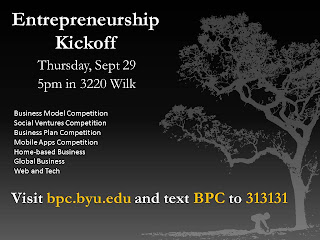"Talking to these high-performing reps is very much like talking to an accomplished doctor. "If I see A, I'll do B; if I see C, I'll do D." But this is where the parallel ends.
The "B" and "C" players, on the other hand, generally do not have the experience or capability to discover best practices on their own. At the same time, all too often sales training is general in nature, focusing on developing broad capabilities like discovering customer needs, rather than helping the company's reps master critical company-specific best practice procedures.
Sales management often succumbs to the error of exhorting reps to improve their results, or coaching parts of the process piecemeal, rather than teaching and drilling critical company-specific best practice "standards of care." In most companies, it is this absence of systematic best practice knowledge and supporting mechanisms that leads to such great variance in practice."
And:
And:
- Train the process. The most effective training must go far beyond teaching general sales capabilities. It must focus on systematically teaching your reps your company-specific best practice "standards of care." For example, in the account penetration process, there likely will be a small number of well-proven game plans, and each of these will have several identifiable stages with particular critical activities at each stage. Every rep should know your best practice process and master in advance the essential skills necessary for success at each stage.
- Coach the process. Consider the words of Tom Brady, the New England Patriots' star quarterback: "The goal of winning three consecutive Super Bowls should take a back seat to putting together three straight quality practices." In the account penetration process there will be certain identifiable "pinch points" at each stage. For example, if a rep is moving into a stage in which the critical element is talking to engineers, the manager should coach and drill the rep in the process of talking to engineers until his or her performance is consistently excellent.
- Measure the process. All too often, sales measures are too vague and broad. In account penetration, measuring progress in moving an account from stage to stage is critical. Sometimes, important progress does not yield immediate revenues.
- Constantly improve the process. Like any "standard of care," your best performers will always find ways to make the process better. The key is to identify and capture these improvements and systematically move your whole sales force to this new and better level.
The most powerful aspect of harnessing your own best practice is that your sales force will be very receptive to the improvements. Your own best practice is literally your own. It was developed by your own top performers, whom everyone in your company respects and admires. The accounts in which the best practices worked are your own accounts, often legendary turnaround successes. Your reps will be hungry for an understanding of how they could do the same.
Harnessing the power of your own best practice is the best of all worlds. The "standards of care" are available within your own four walls. You can identify, codify, teach, coach, and spread them rapidly and effectively. And your own sales force will readily accept and embrace them.
Harnessing the power of your own best practice is the best of all worlds. The "standards of care" are available within your own four walls. You can identify, codify, teach, coach, and spread them rapidly and effectively. And your own sales force will readily accept and embrace them.





















